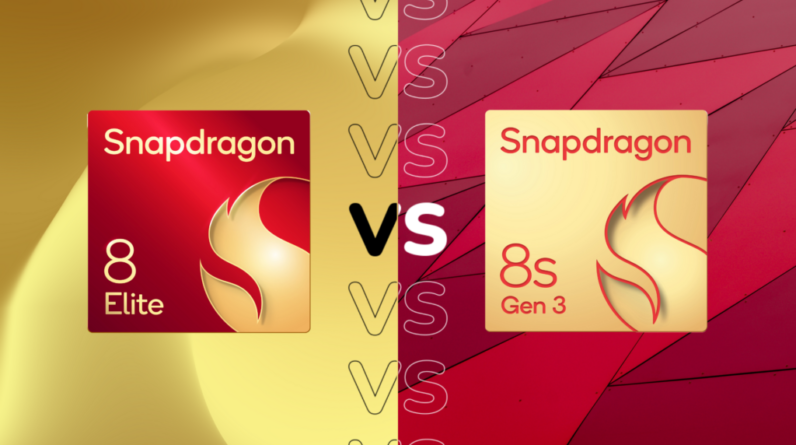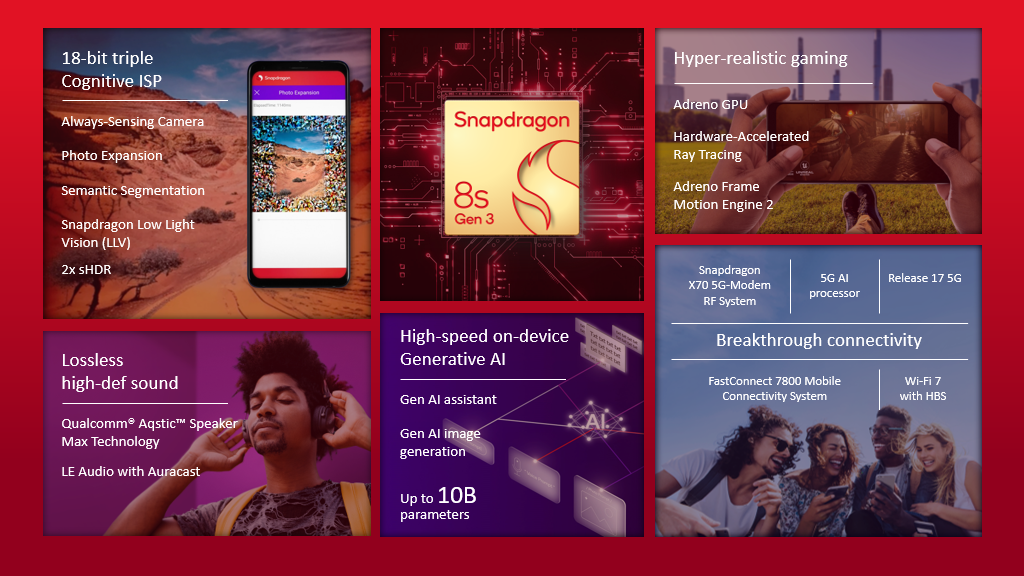
Qualcomm recently announced its latest top-end mobile chipset, the Snapdragon 8 Elite.
Not only does the Snapdragon 8 Elite have a new name, marking the company’s shift away from its usual branding, but it’s also packed with exciting upgrades.
Keep reading to learn how the flagship Snapdragon 8 Elite compares to the mid-range Snapdragon 8s Gen 3.
The Snapdragon 8 Elite has a faster CPU
The Snapdragon 8 Elite is faster than the Snapdragon 8s Gen 3.
This isn’t massively surprising as the Snapdragon 8s Gen 3 is a mid-range chipset designed to offer speeds somewhere in between the Snapdragon 8 Gen 2 and last year’s Snapdragon 8 Gen 3. The Snapdragon 8 Elite is a high-end chipset and an update on the Snapdragon 8 Gen 3, so it makes sense that the 8 Elite would be more powerful.
Not only is the Snapdragon 8 Elite built on a 3nm process instead of the usual 4nm, but it also swaps out the Kryo CPU in the Snapdragon 8s Gen 3 for the newer Oryon CPU featured in Qualcomm’s Snapdragon X Elite laptop chips.
This results in clock speeds of up to 4.32 Ghz from the 8 Elite, beating the 3 Ghz clock speeds achieved by the Snapdragon 8s Gen 3.


The Snapdragon 8 Elite offers stronger gaming performance
The Adreno GPU has also seen a handful of upgrades, with the Snapdragon 8 Elite delivering a major performance boost for gamers.
The GPU in the 8 Elite features sliced architecture for the first time, resulting in higher clock speeds, 40% higher framerates, 40% better efficiency and improved Ray Tracing compared to the Snapdragon 8 Gen 3. Considering the Snapdragon 8s Gen 3 falls slightly behind the 8 Gen 3, you can expect an even more noticeable difference between the mid-range chipset and the latest flagship when it comes to both the lengths of your gaming sessions and how smooth they appear.
That said, the Snapdragon 8s Gen 3 is still packed with Snapdragon Elite Gaming features, allowing gamers to experience sharp resolutions and ray-traced graphics on mid-range devices.


The Snapdragon 8 Elite supports 8K video
The Snapdragon 8 Elite also has the upper hand when it comes to its cameras – particularly regarding video capture.
The flagship chipset can now snap 320-megapixel images with a single camera and record 8K video at up to 60fps. There’s also support for slow-motion video capture in 1080p at up to 480fps and you can record from three 48-megapixel sensors at once at 30fps.
The Snapdragon 8s Gen 3, on the other hand, is capable of taking 200-megapixel photos using a single camera and capturing 4K video at up to 60fps. There’s also 1080p slow-motion support but this is limited to 240fps, or record from three 36-megapixel sensors at once at 30fps.
The same goes for video playback, with the Snapdragon 8 Elite capable of displaying 8K/60fps video, while the Snapdragon 8s Gen 3 is limited to 4K/120fps.


The Snapdragon 8 Elite delivers faster download speeds
The Snapdragon 8 Elite takes advantage of a new cellular modem, the Snapdragon X80 5G Modem-RF System. This modem offers peak upload speeds of 3.5 Gbps and download speeds of 10 Gbps.
The Snapdragon X70 5G Modem-RF System in the Snapdragon 8s Gen 3 offers the same 3.5 Gbps upload speeds, but slower download speeds at 6.5 Gbps.
Early verdict
If you’re looking for the best possible performance from a Snapdragon chip, a Snapdragon 8 Elite-powered smartphone is the obvious choice. That said, the Snapdragon 8s Gen 3 packs plenty of power and features in a more, affordable mid-range package.
You’ll have to wait for our first review featuring the Snapdragon 8 Elite to learn how these two chipsets measure up in our benchmarking tests.






